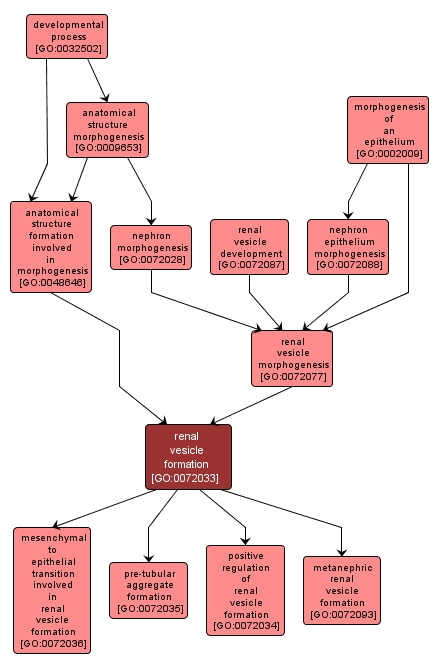GO TERM SUMMARY
|
| Name: |
renal vesicle formation |
| Acc: |
GO:0072033 |
| Aspect: |
Biological Process |
| Desc: |
The developmental process pertaining to the initial formation of the renal vesicle from condensed mesenchymal cells. The renal vesicle is the primordial structure of the nephron epithelium, and is formed by the condensation of mesenchymal cells. |
Synonyms:
- nephron epithelium formation
|
|

|
INTERACTIVE GO GRAPH
|














